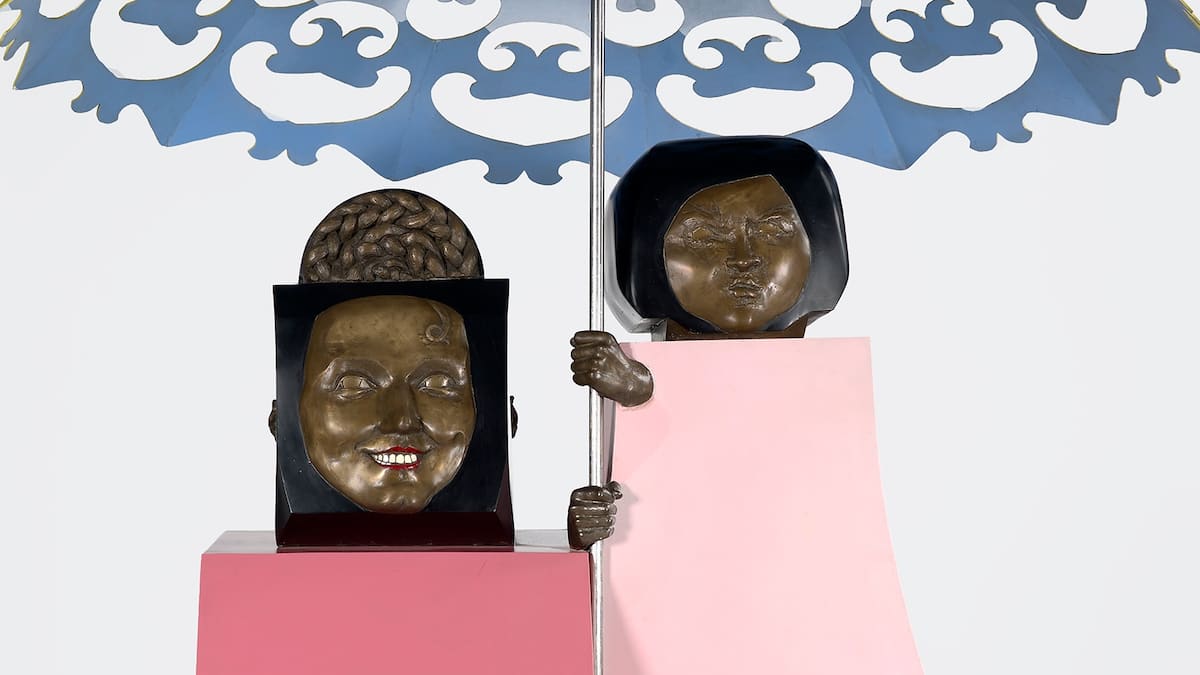Venezuelan artist Marisol disappeared from the New York art scene after making ‘Mi Mama y Yo,’ now at the Albright-Knox Gallery
[ad_1]
“I am the Venezuelan, born in France, living in Italy — that has an English car with North American plates and Swiss insurance — and they want to ask me what nationality I am.” So wrote Marisol Escobar — better known simply as Marisol — in her journal in 1956.
Marisol’s star was just beginning its remarkable ascent. The following year, she would be given a solo show at the New York gallery of Leo Castelli, placing her ahead of both Jasper Johns and Robert Rauschenberg. Twelve years later — after a decade of fame that included a profile in the New York Times and another, by Gloria Steinem, in Glamour magazine, an affair with Willem de Kooning and mobbed exhibitions — Marisol made this sculpture: “Mi Mama y Yo.”
My mom and I.
Look! It’s a happy work. Part pop, part folk art. Bright, glossy colors (yellow, blue, two shades of pink). A gleaming smile. Sleek, boxy shapes. Interesting patterns.
But wait. Surely it’s tragic? The faces like death masks. The child scowling as she does the heavy lifting (literally — her hands hold up the heavy umbrella — but perhaps also emotionally?). The mother’s clenched fists. Her empty shoes. A heavy black bench. A frozen tableau.
So which is it?
Marisol, who died in 2016 at 85, never sold this work. Clearly, as the art historian and Marisol expert Marina Pacini has pointed out, it was very important to her. (It’s now in the permanent collection of the Albright-Knox Gallery in Buffalo)
The daughter of bored, affluent, jet-setting parents, Marisol was moved around a lot as a child. In 1941, her mother committed suicide. Marisol, who was 11, responded by refusing to talk. “I really didn’t talk for years except for what was absolutely necessary,” she said. By her late 20s, when she finally began to speak again, she said that “silence had become such a habit that I really had nothing to say to anybody.”
Marisol (if only more people knew it!) was utterly brilliant. Her work, which was at its most bracing and inventive in the 1960s, expresses a sense of selfhood disengaged from the gears of “identity.” But whether her sculptures’ odd, dissociated look is an expression of stuckness, silence and trauma, or something looser and more liberating, is an open question.
Perhaps it was both. Marisol’s playfulness found expression in her interest in dolls, masks and surreal juxtapositions. “It started as a kind of rebellion,” she said. “Everything was so serious … and the people I met were so depressing. I started doing something funny so that I would be happier — and it worked.”
The artist knew how to create sensations. In 1961, for a panel discussion at the Club, a collective of (mostly male) artists in New York, Marisol appeared wearing a white mask tied on with strings. People in the audience began stamping their feet, shouting at her to remove the mask and let them see her face. As the uproar reached a crescendo, she pulled the strings and the mask slipped off, only to reveal her face made up exactly like the mask.
“What a stunt!” recalled one witness. “It’s something only she would think of, and it brought down the house.”
Like Johns and Rauschenberg, Marisol formed a bridge between abstract expressionism, which placed all its bets on the existence of an authentic self, and pop art, which blew that assumption apart, addressing commerce, advertising and desire with various degrees of deadpan humor and irony. She was a big influence on Andy Warhol, both personally and artistically. She once took some friends, including Warhol (who would cast her in two of his films), to a party filled with abstract expressionists, almost all of whom loathed Warhol and all that he stood for. Mark Rothko took the hostess aside, asking, “How could you let them in?”
“But what can I do?” she replied. “They came with Marisol.”
Given her upbringing, it’s not surprising that Marisol was obsessed with childhood and nuclear family dynamics. Her group portraits are deliberately doll-like, boxy and static. But look closer and you’ll see they are always hinting at whatever is incommensurate and unstable at the heart of identity.
The year Marisol made “Mi Mama y Yo,” her work appeared at both the Venice Biennale and the influential Documenta exhibition in West Germany. She was at the height of her fame. But she needed fresh company. Or perhaps to be alone. She left New York, abandoned the art scene and, like her parents two decades earlier, traveled the world.
It was as if, after “Mi Mama y Yo,” Marisol wanted to stop talking again. She wouldn’t make any new sculptures for more than five years.
Great Works, In Focus
[ad_2]
Source link
